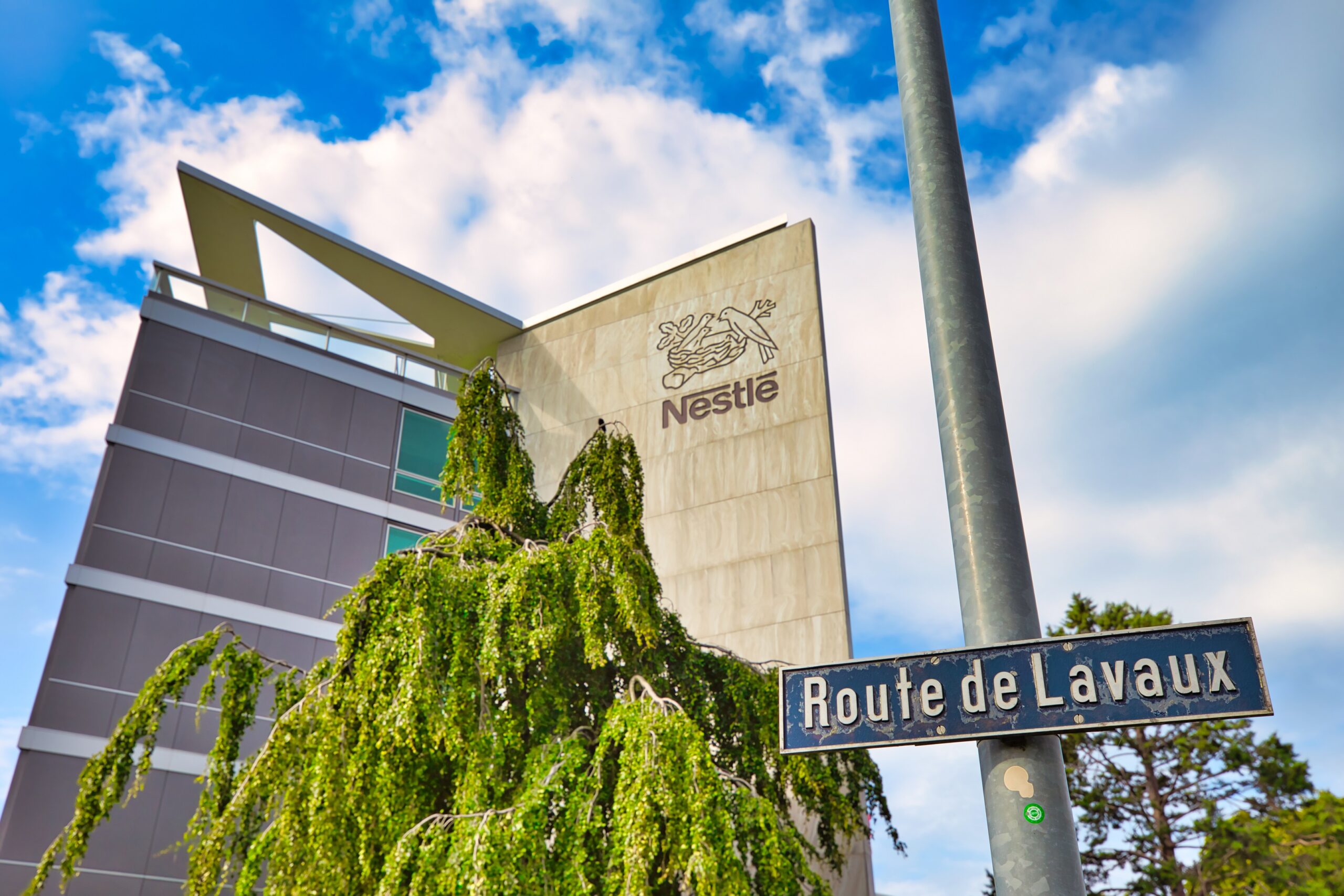
Nestlé’s attention in 2024 is on restoring volumes after a key performance metric turned negative last year, reflecting “softness” in consumer demand.
The world’s largest food maker failed to return real internal growth (RIG) to positive territory in the back half of 2023, as was envisaged by CEO Mark Schneider and his finance counterpart François-Xavier Roger.
Roger had anticipated in September an increase in advertising and promotional spending would help Nestlé achieve that objective but he admitted today (22 February) that trading down into private label had been a barrier.
RIG, which strips out pricing from organic growth to reflect changes in volumes, was minus 0.3%, compared to just 0.1% in 2022 and a more robust 5.5% in 2021. An ongoing IT integration issue at two of Nestlé’s US factories for vitamins, minerals and supplements (VMS) was also a factor.
For 2024, Schneider said he is “committed to delivering real internal growth” as restoring volumes becomes a priority over pricing, where the CEO sees a “moderate price development” during the new financial year.
“This is important in a day and age when this has to take over as the main bedrock of our growth from pricing,” he explained in the context of the “historic food-inflation spike” over the last two to three years.
Access the most comprehensive Company Profiles
on the market, powered by GlobalData. Save hours of research. Gain competitive edge.

Company Profile – free
sample
Your download email will arrive shortly
We are confident about the
unique
quality of our Company Profiles. However, we want you to make the most
beneficial
decision for your business, so we offer a free sample that you can download by
submitting the below form
By GlobalData
“We have to come back to what is the long-term recipe for success and that is a continued focus on volume and mix.”
Pricing in 2023 was 7.5%, easing from 8.2% the previous year, but still well up on 2% in 2021. Organic growth slowed to 7.2% from 8.3% and is also expected to cool further this year to 4%, Nestlé’s outlook reflected.
Roger provided some perspective: “After several years of progress on RIG until 2020, we went through a period of heavy turbulence beginning with the pandemic and followed by a period of unprecedented inflation.
“These factors created significant volatility and clearly disrupted the components of organic sales growth. During 2023, we have seen clear signs of normalisation with the lower contribution from pricing and the higher contribution from RIG.
“We are confident in our ability to return to positive RIG and expect RIG to trend back towards pre-Covid levels over the course of 2024.”
Roger added the improvement is likely to be back-half weighted as further “muted consumer demand and the residual impact of supply issues” related to the VMS business is expected in the first six months.
Consumer “softness”
On the back of what Schneider described as a “resilient performance” in 2023, Nestlé “stepped up investments in brand support”, which, he said “is important, especially in the day and age when private manufacturers are competing with private-label offerings”.
He added: “It is important when you look at the food-sector softness to put it in historic perspective. And what we’ve seen over the last two years was definitely a food-price inflation spike of historic proportions.
“In fact, it’s fair to say that is a one-in-50-year event. The last time we have seen two consecutive years of similarly high food-price inflation was in the 1970s, in ‘73 and ‘74.
“It is understandable that against this backdrop, there has been a consumer reaction when it comes to volume, shifting down to lower price brands, or favouring private-label offerings.”
Roger said Nestlé started to regain market share from own-label products “over the last couple of months”, a development “which seems to indicate that they’ve probably reached the full potential of what they can achieve”.
However, Schneider reiterated past comments about Nestlé’s push into premiumisation, a share of total sales that has increased from 11% in 2013 to rest at 36% in 2023.
“Premiumisation as an across-the-board spectrum trend globally, is something that we’re very committed to. This is not luxury premiumisation. It is essentially defined as starting from 20% above the midpoint of pricing in a category,” he explained.
While organic growth slowed, Nestlé’s reported sales fell 1.5% to SKr93bn ($105.9bn), losing 7.8% from the effects of foreign exchange.
“On average, over the last ten years, foreign exchange has had a negative impact of about 3.5% per annum on our reported sales,” Roger said. “In 2023, this impact was more than twice as large.”
The underlying trading operating profit margin (UTOP) rose 20 basis points last year to 17.3% and was up 40 points in constant currency. Nestlé guided to a “moderate increase” in 2024.
“Even though it’s still a globally turbulent environment, we do believe that these essential key financial targets will be met in the year ’24,” Schneider said. “The quality of our growth [in volume/mix] will be a lot better than what we’ve seen in past years.
“I still see a very moderate price development and I’m not seeing very strong signs for real deflation.”

